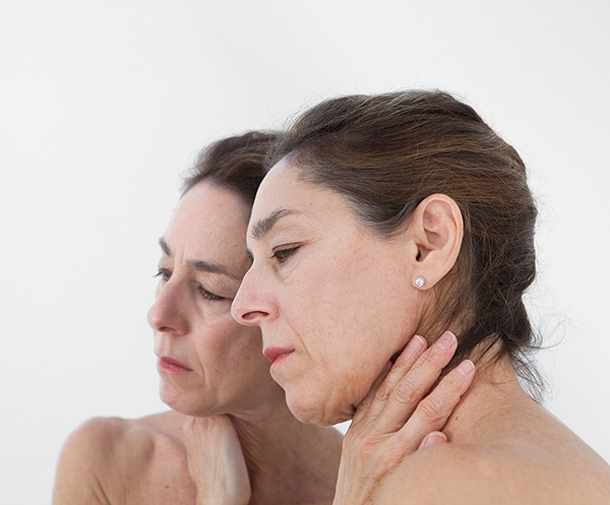
There is something sacred about taking a walk, seeing the places others have seen, following in the footsteps of another’s journey. Your own images leave your head, new images enter. New sights, new sounds, new thoughts.
But what if the journey is one of horror, a 225-mile forced march of 580 “barely living” female Jewish prisoners, from a German concentration camp into occupied Czechoslovakia at the end of World War II? Some 53 years after these women walked, artist and photographer Susan Silas retraced their steps for a project entitled, Helmbrechts walk. Susan’s photos reveal a past that haunts more than just ghosts. The twisting train tracks, the bleak country roads, the arrow straight pines, limbless to their crowns, pines looking too lean and too tall, mocking the gray sky, which is looking too gray. “I find myself inside a small dank space,” Susan writes in one of many diary entries, which along with newspaper excerpts taken from the same dates as her walk, accompany the photos. “I am paralyzed in there. The air is too thick, too cold. I have read too many books.”
Of the 580 women who marched the route Susan retraced, 95 died of exhaustion, starvation, or were shot by guards. What does the eye see in the moment of death? What does the eye see in the moment of life? And how far is the distance between the two? I am one for journeys, and one for walking, and one for innovative projects that address the topic of death. So when Kabul-based photographer John Wendle sent me a link to Susan’s work I was immediately drawn in, to the photos in Helmbrechts walk, to her ethereal photos of dead birds, found birds, and to her very personal photos of sex and sexuality, love in the ruins; sex over 50. Late last month, I asked Susan a series of questions via email. Her answers are just as sincere and startling as her photographs.
1. Can you remember the very first time you thought about death, or realized that you were going to die?
I don’t recall being awakened to the notion of death, it was as if I had always known. And it seems to me that many children of Holocaust survivors were also born with this knowledge, because it was a precondition of their existence—the threat of death for being who and what you are. That said, I do remember at the age of nine, lying in bed and trying desperately to imagine not being and scaring myself terribly with the effort and eventually falling asleep. And having raised a child, I would say that it is fairly typical, at about the age of nine, to become acutely aware of mortality. I don’t know if this happens at the same age in other cultures, but it seems nearly hard-wired in ours. I know that from a very young age I was aware of what Julian Barnes, in his book Nothing to Be Frightened of: Travels and Travails with “Le Reveil Mortel”, describes as “the wakeup call to mortality.” I also remember, somewhat later, as a teen, after a young student at school went to sleep one night and never reawakened, being told that going to sleep each night was a leap of faith, for one never knew with certainty if one would awaken the next day.
2. In referring to your project, ‘love in the ruins; sex over 50’, the online journal Hyperallergic states: “The near-desperation of their union is palpable, as if clinging to one another will stave off the fatal consequences of time.” A powerful statement, but do you believe it to be so…Do you think that as one grows older sensuality becomes more and more about staving off death? Or, in other words, does death make making love interesting and exciting, and is that sentiment enhanced as we grow older?
I don’t know if I consciously think in these terms. Being present or in the moment probably does function to stave off the consequences of time, in that one is being and not forestalling. And one of the gifts of a good sexual encounter is being fully present and not off elsewhere at the same time. When I was younger, this was much more difficult because I was far too self-conscious about how I seemed to my partner, too absorbed in my own commodification as a sexual object. I think as women have become more empowered this problem has waned, or at least, I hope it has.
As other realities have captured our imaginations: cyberspace for example, I feel more rather than less aware of my analogue body. I admit to being mystified by second lives and cyber sex, or at least skeptical. I heard a yoga guru say that, “The body is the unconscious.” I am not sure that is right but I think we do house a great deal of experience in our physical bodies and not just in our conscious minds. And I am not sure that it makes sense to talk about the mind without the body—although that separation is an endless subject of fascination from Roald Dahl’s short story William and Mary about a man’s brain in a petri dish to various disembodied sci-fi fantasies. And these fantasies are no doubt, connected to fantasies of immortality, for in the end, it is the body that gives way and rots and there isn’t anything the mind can do to prevent that. Body integrity is important and the fear of the body’s dissolution is acute.
And yes, perhaps at a certain age, having this kind of physical interaction is an emphatic declaration about inhabiting ones corporeal being.
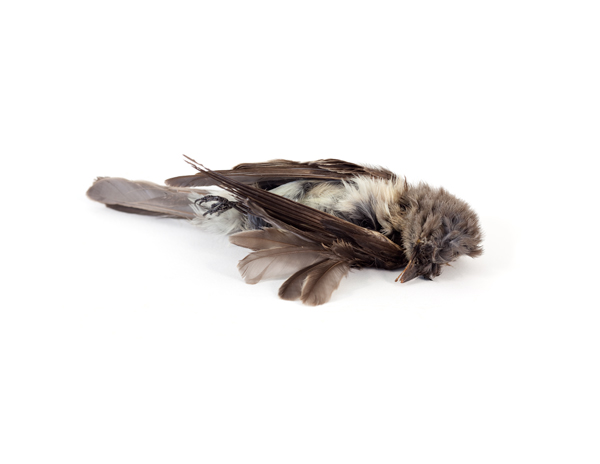
I confess that I have none and that until this moment, I have never once thought about it. I lost my father when I was quite young and the children, my sisters and I, were not allowed to attend his funeral. The consequence of this unfortunate and selfish decision by my mother and my uncle, was endless fantasies that my father had run off somewhere or divorced my mother without informing any of us. I imagined him living as a gangster in Cuba, and dreamed often of unexpected encounters with him in exotic settings. I should add that the death of the family dog, many years before his death, was treated in a similarly surreal way. We were told that the dog had run away. My sisters were heartbroken, but I knew this to be a lie. I knew the dog loved us and would never run away and I continued to insist. Finally, with a great sigh, my mother revealed that the dog had been kidnapped, taken away against its will. This insane story was invented in order to avoid acknowledging that the dog was dead. For two people who had been through the war in Hungary and lost most of their respective families, this fear of naming death seems rather odd to me, but that is what transpired. So when my grandmother died at the age of 91, I shot a roll of black and white film of her in her coffin. I wanted her death to be real to me. There is more of a tradition of photographing dead loved ones in the South. I believe that Emmit Gowin photographed dead family members as part of his ongoing work. And there was a beautiful set of images made by a photographer whose name escapes me for some reason; she photographed dead bodies at funeral homes in Harlem and gave one copy as a gift to any family that agreed to have their family member photographed. These bodies were regally attired and prepared for burial. Jews don’t embalm or dress up their dead the way Christians do. It was just my dead grandmother in a pine box. I didn’t develop the film immediately, and eventually I lost the roll of film. But it served its purpose. I knew she was dead.
We know that artists have recorded their own disintegration. Hannah Wilke created an incredible record of her mother’s illness with breast cancer and then later her own impending death in the work intra Venus. I am sure there must be other examples. But I haven’t given any thought to doing something like this myself. Although, that may be just a half-truth, as I cast my face in plaster in 1992 and again in 2012. I think of these plaster casts as death masks because they are similar to those casts taken of the dead but when one is living they are referred to as life masks. And I plan to make one each year from now on—so perhaps I am already doing as you suggest.
Other Great Reads: Interview with the world’s very first funeographer
4. If you could design your last day on earth, what would it be like, including the death itself?
Again, I don’t really think like this. I know that I have had moments, lying on my husbands warm body, of complete safety and peace, and it has crossed my mind that it might be a good way to die—in the gentle embrace of someone who makes the world feel safe. On the other hand, I think I would want to see the face of my sweet and extraordinary daughter, but I don’t know if that is something she would want, e.g. to see me die.
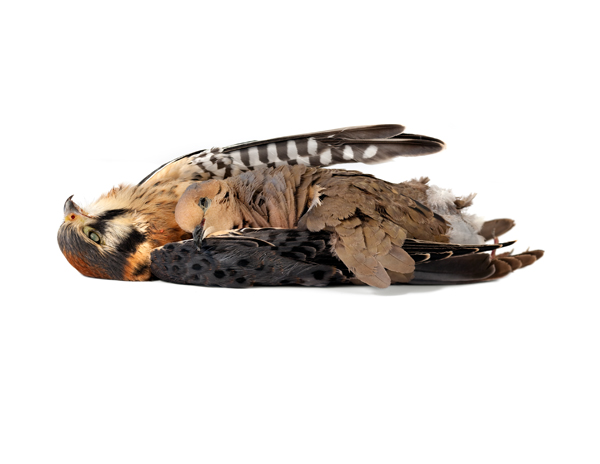
I am going to take this interesting question to three completely different places and I’m not going to try to tie this up neatly. I did a work, a six channel video titled Treblinka Song and The Happy Wanderer, in which my daughter sings two songs. It is a work about the Shoah and about the transmission of both culture and trauma from one generation to the next. But the inspiration of the work speaks to your question. In the video, my daughter occupies the middle frame of an extended landscape on two opposing walls, and one of her selves sings while her other self on the opposing wall listens and then that second self sings while the first listens. The work was inspired by the practice, at Treblinka, of forcing prisoners to memorize what amounts to a camp jingle glorifying Treblinka before they were executed. Franz Suchomel sings that song for Claude Lanzmann in Shoah and proclaims with some pride: “That is an original. No Jew today knows how to sing that anymore!” In other words, we killed everyone we taught that song to so I am the only one left who knows it. This struck me as one of the most perverse things I had ever heard about the Nazi regime. It wasn’t enough that their ambition was to exterminate every Jew in Europe but they wanted to control the chemicals that were created in the brains of their victims at the moment of death. They wanted to determine their thoughts, and the tune those thoughts were carried on; to imprint on the brain what the last thought would be, to try to deprive the dying of their own private thoughts.
We hear a lot of stories about near death experiences, or the experiences of people who were reported brain dead and were revived and came back to life. Of those people, some twenty percent have visions or experiences that they relate when they have been revived. Those doctors who believe what their patients are telling them, some do and some don’t, suggest that perhaps we don’t fully understand how the mind and consciousness operate because they are unable to explain how someone can have experiences or know about things that are happening to them when they appear to the medical profession to be dead. And of course, we don’t know if this only happens to people who were not entirely dead, e.g. were somehow revived and came back to life or if they also happen to people who are permanently dead to us. But it is curious that there is so much of this reported and it is unclear what it means. And of course, we have the old cliché about one’s life flashing before one’s eyes.
When I retraced the steps of the women who were forced to march out of Helmbrechts to Volary, I was struck at various times, by the beauty of the pine needles and moss that formed the forest floors along the march route. And if I had been one of those women, I am not sure I would have had either the physical or mental stamina to have withstood what they suffered, and the forest floor seemed like a bed, and I thought that for some it might have been a relief to just lay down on that soft bed and look up at the sky. But I don’t believe from the transcripts that anyone who perished along the march route was allowed a death that peaceful. It was always about brutality, even in the final seconds of life.
Other Great Reads: A guide to dealing with grief
6. Do you think human death is of nature, just like the birds, and in the same class as the death of an animal, or that somehow because of our consciousness and intellect a human death signifies more, a greater vibration against the curtain of the netherworld?
I think we have traditionally defined human consciousness and our difference from other species in terms of our awareness of death. In other words, we believe that we are the only species to reflect upon our mortality. We know that other animals experience fear and something akin to joy, that other species play and exhibit affection for their young, but we are not certain that they understand that they too will die. As animal studies become more sophisticated we start to see that communication among animals is more profound than we had previously understood. We begin to suspect that animals and birds can pass learned information along to their young. We see that birds mourn their dead and we see that some bird species not only use but make tools. In the end, we are all subject to the life cycle: being born, living and dying. I don’t know if consciousness alone gives our deaths a greater meaning in some objective way. I rather doubt it. But it certainly matters to us, because we are conscious.
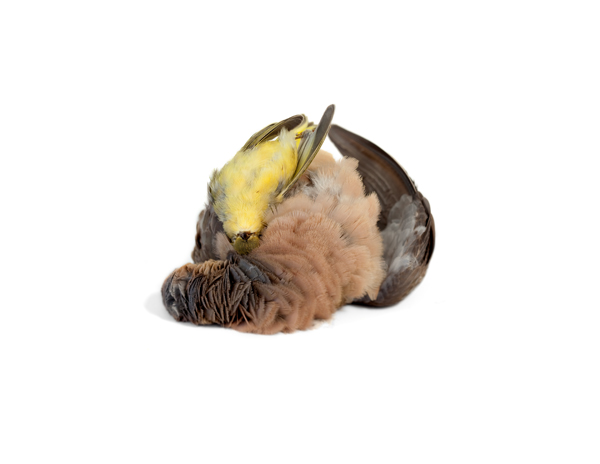
I was just reading, today in fact, a review of the films and the memoir of Rithy Panh, a survivor of the Khmer Rouge regime in Cambodia. During the reign of the Khmer Rouge one in every five persons in the country was murdered. Imagine what that means. In a restaurant of 60 people, that’s twelve people and then extrapolate from there. I was in Siem Reap for five days in 2012 and the absence of all of these people is palpable. A country doesn’t recover from a trauma of this magnitude for a long time. And it felt very different from Vietnam. Because while Vietnam was traumatized too, they were victorious over the greatest superpower in the world. So there is pride and accomplishment and a sense that the suffering and all of the sacrifices were somehow justified. But the trauma in Cambodia has no such justification. And I think we can see that there are other forms of ideological thinking being carried to extremes that have replaced the “communist” model. Today for the most part that kind of thinking is being propagated by religious fundamentalist models of some sort. We think of death as the end of consciousness. In Rithy Panh’s work he interviews a painter named Vann Nath. Vann Nath is quoted as saying that taking obedience to such extremes “is the end of human conscience.” If we have no conscience what is the point of consciousness? I think the adherence to rigid doctrine will always have frightening results and there is no evidence that these behaviors have come to an end or that “enlightenment” will eradicate them. The group of Afghan men who sat around smoking on a hillside while photographing and videotaping the murder of a women accused of loose morals appear to think of themselves as enlightened religious men following a self-righteous path and dispensing with an undeserving sinner in their midst. While structural models can be useful to critical understanding, they are not particularly helpful as models for behavior. I am not convinced that any kind of moral or righteous behavior can be compelled from the top down and if we must depend on individual conscience, then we are likely to continue to have the same mix we have always had.
8. ‘found birds’, and other works of yours, certainly make one consider the cycle of life. I am wondering, have you ever been alive before? Do you think you will ever be alive again?
I have many friends who believe in past lives and past life regressions and reincarnation. I have to confess that I don’t believe in any of this. But we can conceive these ideas in a slightly different way. That is to say, part of me is made up of DNA that came from people who lived before me. In that sense, I lived before. Not in exactly this configuration but not entirely different either. We also now believe that certain experiences may alter DNA and thus be passed along to future generations. In this way, I may carry some part of previously lived experience in addition to just genetic material. So in that sense, I think I have been alive before and that I am in some small measure alive in my child.
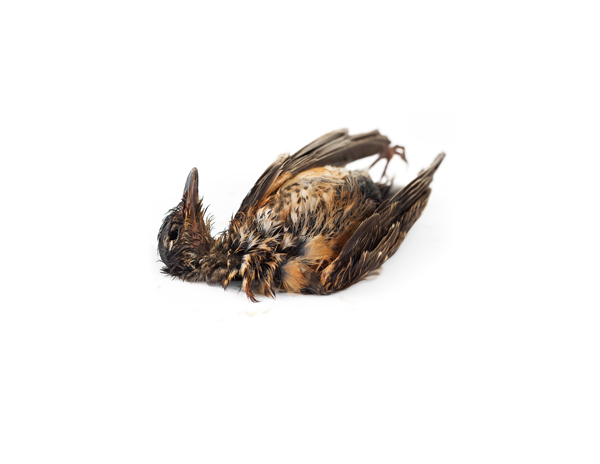
This question makes me think of all those Masterpiece Theater presentations where the child in period dress is forced to confront a coffin or kiss the cold skin of some old decrepit dead person and is forever traumatized by this unforgettable event. I don’t think that showing children death at a young age is necessarily useful and I do think that children come to the realization of their own mortality before puberty and that this is a normal developmental occurrence. I think we have overly sanitized death in America and that it is over-medicalized. That is perhaps the most harmful aspect of it. I grew up in a European household and my grandmother died at home. That was considered perfectly normal but among my acquaintances it was unusual. The movement of death out of the home and into the hospital is probably the most radical change in the experience of death in our culture. Children watch “fake deaths” endlessly on television and in movies and I think that must alter to some extent our view of death. Representations of sex are considered material children should be sheltered from but violence is seen as the near equivalent to play. Yet actual deaths are secreted away from view and spoken of in hushed tones. I find this rather odd. On the other hand, I would never think to force a young child to view death outside of a personal circumstance like a familial death.
10. How has death, either a fear of it, an attraction to it, or a mystification by it, affected what you have chosen to do as your career in life?
I think that many artists come to what they do from a sense of loss and a desire to make things whole somehow. Death is the most profound loss and I experienced that at a very young age. It was also the backdrop, in the form of the Holocaust, of a lot of whispered information that I didn’t fully comprehend as a child. It’s curious that Julian Barnes writes about his fear of death and his preoccupations with it and he is a fiction writer and his brother, who is a philosopher, does not share his fears. Who knows if that means anything in particular or not. There’s no control experiment, so I can never know what I might have done had my father not died when I was ten, but I suspect life would have been very different.









